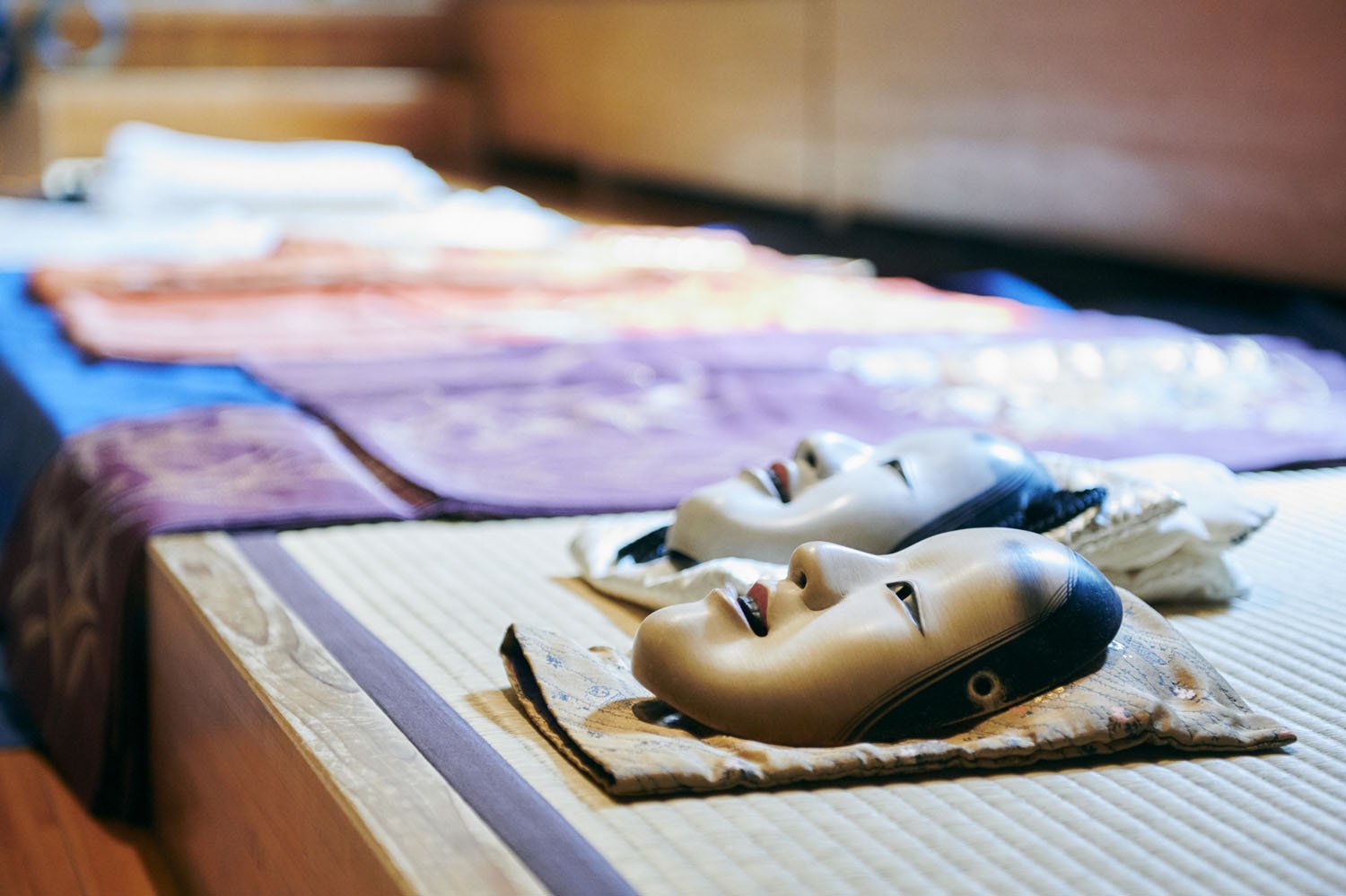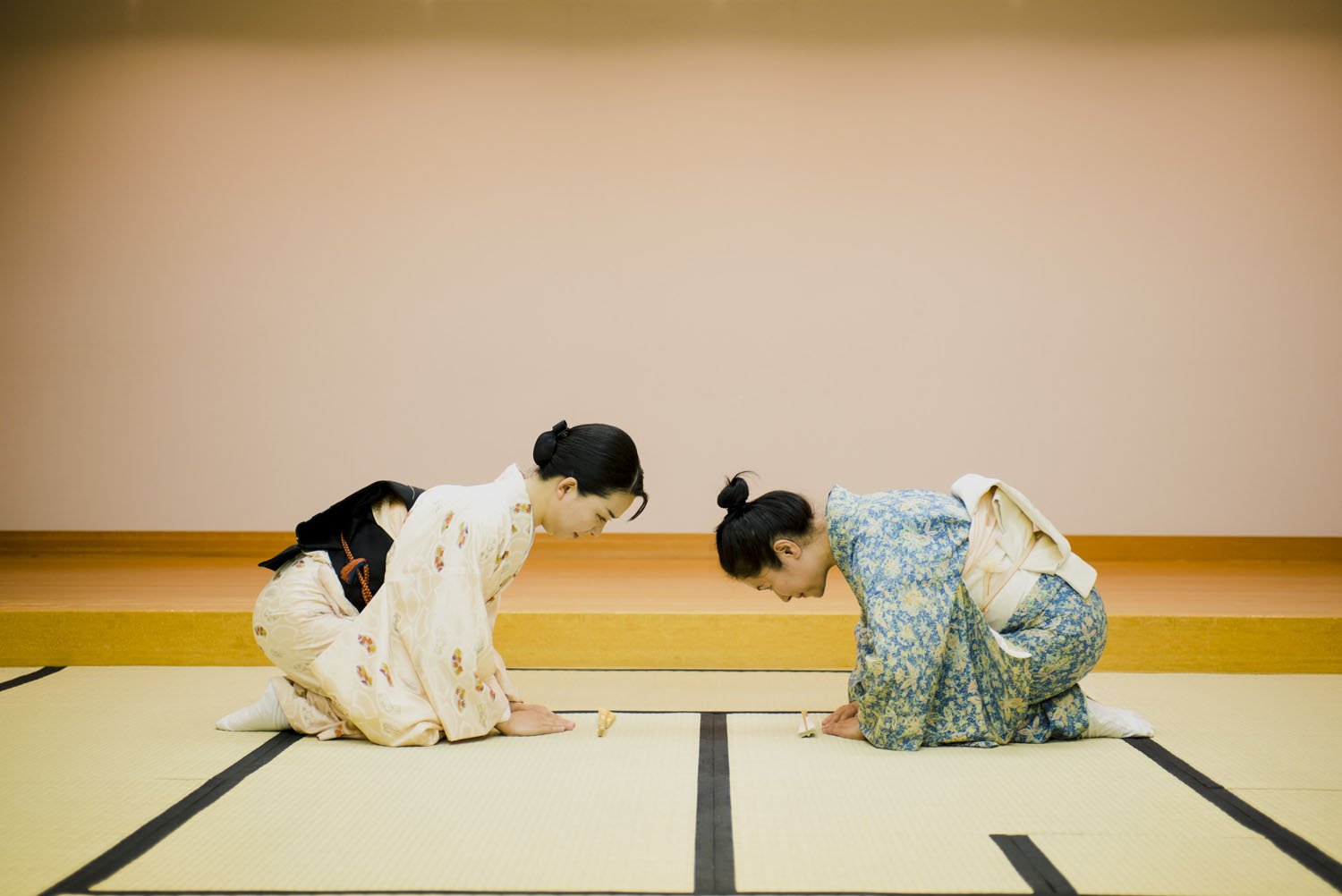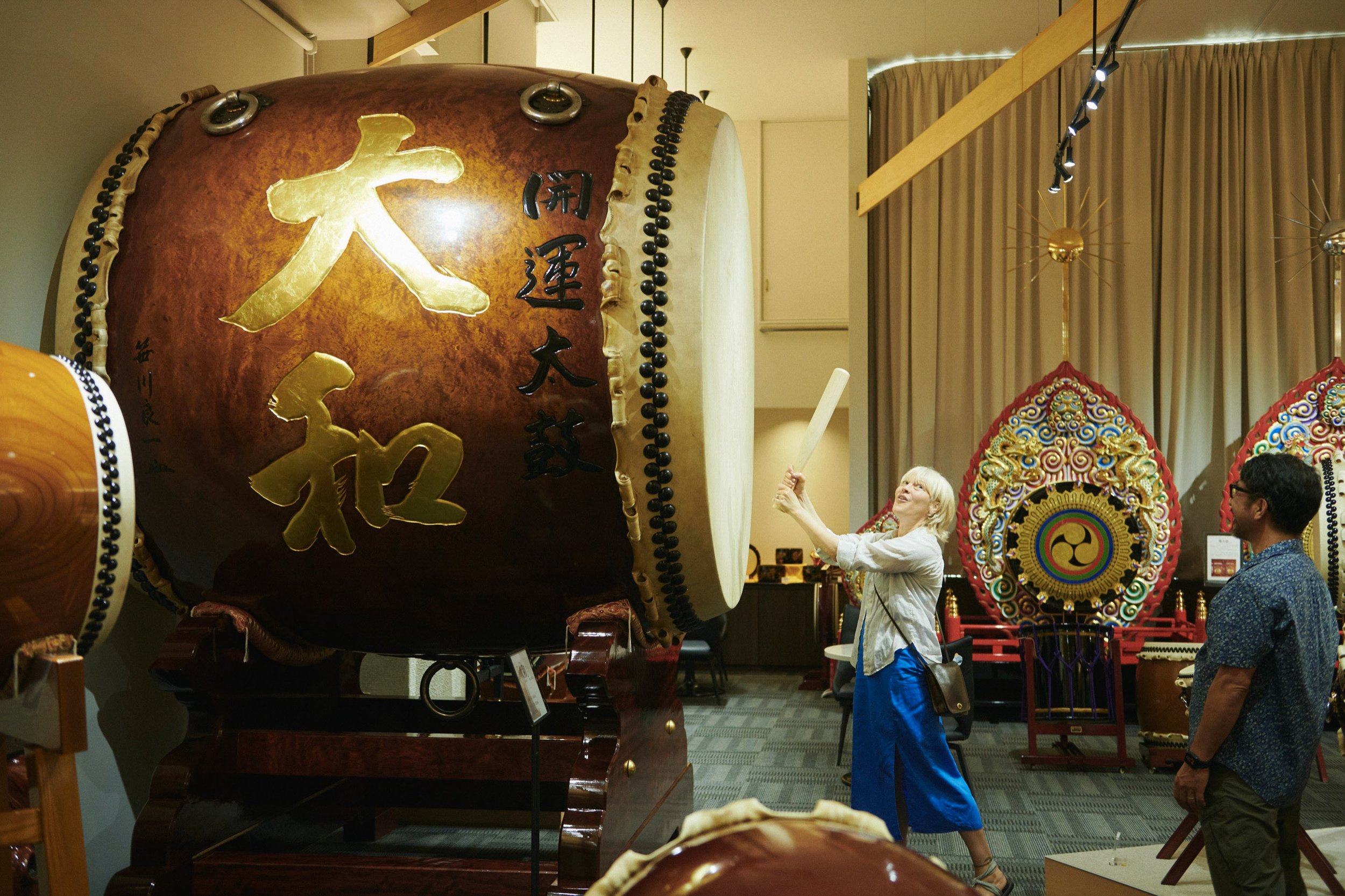Experiencing Time through the Lens of Jo-Ha-Kyu
Introduction to Noh
By Eli Troen
It was only 15 minutes into the Noh play that I realized—I was not the only audience member cluelessly looking for an explanation. Amid the deftly-executed, slow movements on stage, the mid-70s woman to my right had pulled out an old, chapbook-like pamphlet, page after page adorned with calligraphic Japanese characters, a book which I learned during intermission was the entire text to the play. This is a common, if not encouraged, experience for audiences viewing Noh.
Noh-Gaku 能楽, a traditional Japanese performing art popularized during the Muromachi Period (1333—1573) and characterized by slow movements, chanting, and masks, is not known for its intelligibility. In fact, despite Noh’s designation in 2001 as UNESCO Intangible Heritage, even most Japanese people are unfamiliar with the practice. According to my seat-mate to the right and to many audience members, however, the unintelligibility is worth it, for the costumes, the sensory experience, and the flow of the movements. Most of all, the performance’s culmination in a final dance sequence, described often as a revelation of exquisite, internal beauty, is a raison-d’être for audiences.
As I settled into watching the production, the performance’s tempo began to increase, little by little. Eventually, the crawling pace was all but gone. Arriving at that final dance known as a mai 舞, a highly formalized sequence with purely instrumental music, the main character’s complex situation and emotional state were revealed. Here, the Noh play’s deeper meaning becomes apparent, as the actor’s physical movement creates understanding without the use of words. Finally, in contrast to the until-then slow pace, the climax and its aftermath brought the 2-plus-hour production to a decidedly swift close.
Through the structural organization of the play—a long, slow ascent, a speeding up, and a rapid end—Noh finds its definitional relationship to time. And it is through this Japanese approach to storytelling that Noh gives audience members a way to navigate the play, even in the absence of a script.
Jo-Ha-Kyu and The Structure of Noh
Approximately 650 years ago, the Noh playwright and performer Zeami Motokiyo came to the following realization of Noh performance: “Every phenomenon in the universe develops itself through a certain progression. Even the cry of a bird and the noise of an insect follow this progression. It is called Jo, Ha, Kyu.”
Zeami is often considered the father of the Noh-Gaku which is practiced today, with countless texts and plays attributed to him. By putting words to this progression of time, Zeami would go on to change not only Noh Theater but the disciplines across the field of Japanese Arts, including tea ceremony, calligraphy, and more
Jo-Ha-Kyu 序破急 can be translated from Japanese as “beginning/opening,” “break/progression,” and “rapid/climax”. This structure begins with a measured slowness, then it progresses with increasing intensity, and finally, it culminates in a swift climax. After a full sequence, the progression begins anew.
With a traditional, five-piece program of Noh-Gaku, Zeami suggested that the ordering of the five plays should satisfy Jo-Ha-Kyu, with the first play being jo, the second, third, and fourth plays being ha, and the final play being kyu. This would allow audiences to settle into the repertoire, to find themselves more and more immersed as the program continues, and to be enthusiastically satisfied at the end of the final piece. Further, within each individual play, a five-part, or five-dan 段 structure would exist. The first dan would satisfy jo, the second, third, and fourth dan satisfying ha, and the final dan, which culminates in the mai dance, satisfying a rapid kyu ending.
To better understand the Jo-Ha-Kyu progression as it relates to the structure of a Noh play, consider one of Zeami's most popular texts Takasago 高砂.
Takasago through the Lens of Jo-Ha-Kyu
Takasago takes place on a classic springtime day at a beautiful shrine filled with pines. Admiring the day’s beauty, a priest meets an old couple who arrive to sweep and tend to the area beneath the trees. The couple tell the ancient story of the two legendary pine trees takasago and sumioe which, paired together, symbolize the marital relationship. As the priest laments the reality of relationships, the couple reveal themselves to be the spirits of the wedded pines. The spirits then set off across the water, with the priest following in their wake.
With a classic story and structure, Takasago exists as an almost prototypical example of the Jo-Ha-Kyu structure. Beginning with jo, or opening, the first dan welcomes the priest, who relates to the audience the details of his location, the shrine, and the pine trees with a chant. Entering into ha with a now increasing tempo, the second dan brings an old couple, along with the tale of their chance arrival. The third dan continues to build the momentum, the priest and the couple exchanging words about the pines. The fourth dan then leads to the revelation that the couple are the spirits of the pine trees. Finally with the swift end of kyu, the fifth dan showcases the spirits in their true form, as they perform an exquisite dance and leave the shrine behind.
Comparing Jo-Ha-Kyu and Beginning-Middle-End
When looking at Takasago through the lens of Zeami’s Jo-Ha-Kyu, the classical Western structure of Beginning-Middle-End is an insufficient or rather ill-suited method for approaching Noh as an observer. This is particularly clear when recognizing that the grand reveal by the spirits takes place in the ha phase of the structure, not the kyu phase most associated with a climax and swift ending.
Most Noh plays center around an unknown or mysterious character and the revelation of their true identities. And as such, when the old couple shares their godliness, it is welcomed with an audience’s expectations rather than surprise. What is, however, climactic is the way the character’s metaphorical unmasking allows for a deeper-felt emotion to be shared with the audience. Inextricably linked with this cascading tempo accelerating into the final kyu section, the final dance becomes a release for both the character and the audience, one unobtainable by the reveal of simply a character’s name alone.
Rather than a revelation of plot, Noh-Gaku focuses on the externalization of emotion as its climax. More so, as emotions build to a release, Noh both creates and reinforces its climax through its measured increase in tempo and smoothness of progression. Additionally, while Beginning-Middle-End refers almost exclusively to dramatic structure, Jo-Ha-Kyu is applicable to every aspect of Noh, from the plot to the chanting and music to the movements—and even the movements within movements.
By observing Noh within the schema of Jo-Ha-Kyu, the peaks of loudness and speedy movement and beautiful dance, as well as the lead-up to those occasions, fit together with a sense of purpose. Rather than a staircase of plot points, Noh is a natural cascade into the next moment and the one beyond.
Jo-Ha-Kyu, the Audience, and Sharing the Journey
The celebrated Noh actor Yoshi Oida writes about Jo-Ha-Kyu in his novel The Invisible Actor. He notes that while sometimes this forward progression of time might slow down or even become completely indistinguishable, Jo-Ha-Kyu still unfolds on an internal level. It could be through breath or through the beating of the heart. And from that momentary pause, the progression will again begin to develop and to speed up and finally to crash over the audience like a wave.
Perhaps more significantly, Noh’s internal development of time can and does take place not only from the performer’s perspective but also from the audience’s. Oida writes, “Since the Jo, Ha, Kyu pattern also exists within the body of the onlooker, the audience experiences a sense of organic ‘rightness’ when actors use this rhythm. The bodies of the actors and the bodies of the watchers become connected, and it feels as if they are sharing the same journey.”
Of course, this shared “journey” of audience and actor says nothing of the intelligibility of Noh, it says nothing of best practices for experiencing Noh, and it says nothing of one’s ability to enjoy it, either. So, how should one enter into a Noh performance and be able to make ways into the esoteric art that is Noh-Gaku?
I have two recommendations. First, review a synopsis of the production beforehand. Like with Takasago above, you can begin to sense the structure of the piece. That way, you are free from worrying about the plot unfolding on stage. Second, as Oida’s words affirm, Noh must be felt. Jo-Ha-Kyu is the basis on which Noh is crafted and understood. It is specifically through feeling the tempo, cascades, and rhythm of the performance that Noh comes to life.
At the end of the Noh production, as the beautiful and brisk kyu wave of the final dance passed over me, I leaned over once more to the woman on my right. I inquired, “What did you think of the performance?” With a wide and crooked smile, one worthy of a Noh production’s mysterious spirit visitor, she replied, “I did not think much at all.”
About the Author: Eli Troen is a writer, theater-maker, and tea practitioner, working at the intersection of ritual practice, ancestry, language, and expressionism. He has written and performed in various theatrical works in the USA, Germany, France, and Mallorca. Eli currently resides in Japan, where he is studying Kaga Hōshō Noh under the supervision of Watanabe Shigeto Sensei and Urasenke Tea Ceremony under the supervision of Sokyu Nara Sensei.







